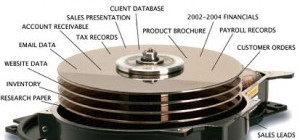 Are you mapping heights through online business? Then for sure, you would be acknowledged of cloud computing? It’s no shock that you might be taking leverages out of this mega technology. But if you’re not in the same boat as other cloud computing users, then all ears what the IT experts say.
Are you mapping heights through online business? Then for sure, you would be acknowledged of cloud computing? It’s no shock that you might be taking leverages out of this mega technology. But if you’re not in the same boat as other cloud computing users, then all ears what the IT experts say.
What is a cloud computing?
It is a process of hosting virtual assets/services over the internet. Hardware (like computers, mouse, keyboard and so on), storage and software/applications (such as HRMS, Photoshop & many more) define the virtual asset. The coolest of its all features is its virtual resource(s). You don’t need to accommodate an office with the pan-network and systems as they are virtually available on the cloud.
Mostly, it’s the preference of a smart entrepreneur. Why shouldn’t be so? If one opts out of data accessibility & internet connectivity at a thunderbolt speed, the use of this adjective would be absolutely fine. Other than these, he/she gets scrolled up scalability, improved integration and chopped off overheads.
But, you can’t ignore the security flaws that flare up when your business goes up and up. At that time, you must derive a few precious hours to discuss the cloud security with your technical network engineer. Or, you can consult with the best managed IT service providers. They would calculate the risk of cloud security breaches on your behalf.
Here are a few tips to measure up its security and how to seize it with robust security structure.
- Explore the security deeply:
You make a shift from the physical IT infrastructure to the virtual one. The IT consulting firms rely on the data migration technique for it. This technique pulls the socks of your data management up by transporting it between the data storage system, formats, and systems.
While doing so, you must keep your eyes peeled to see if the IT services providers have used the upgraded intrusion prevention system. Do they integrate threat detection software or tools-ask them. If they bet on their responsibility, you must check their security module & settings. And also, you can interrogate about the instances of data loss in their work history. You must inquire about the security audits and the scenario of the IT helpdesk support in your local area.
Do inquire about their storage and backup architecture. Take a precise into the checklist of their cybersecurity deliveries, onsite and remote IT support services.
- Glance over the physical security:
Like virtual security on the network, your cloud network needs an intense surveillance of the physical eyes. Be in touch with the competent authority that bears the responsibility of its security. Make sure that the cloud security provider must have anti-cybercrime software to fail the attempt of break-ins. Get acknowledged of what tools and authentication method he follows.
- Multi-folded authentication:
With the evolution of phishing tricks and malware, the cyber-crimes are going critical & complex. The cyberspies tend to discover atypical methods to take a sneak peek at your sensitive data. They don’t let even a single chance of cyberbully go. Social messaging apps, like Whatsapp, Facebook and Snapchat etc., are their conduit to infiltrate user’s login and steal other credentials.
Authentication in manifolds can help you get off such bullying shots on your network. Set a strong password with an ideal blend of special characters (like #, *and @ etc.). Walk through thoroughly its access settings. Specify the name of the confidential ones who can pass through the authentication process. Don’t make it available to the public. Give a few sessions on how to deal with the instances of breaching. Train them how to trace the spammers or cyberspies and their emails, spammy links & websites.
- Is your cloud partner causing a compromise?
Have you transported your data on to the shared cloud network? Did you look into the challenges that could be dire?
Sometimes, a bit of carelessness opens the can of worms. Managing multiple accounts can leak your sensitive login or other credentials. Therefore, don’t compromise on such data leakage. Take shelter under end-to-end encryption methods. They will help you prevent its sensitivity from soup to nuts. Only the receiver can decrypt it with his/her private key.
Contributed byhttp://www.multitechit.com.au/







